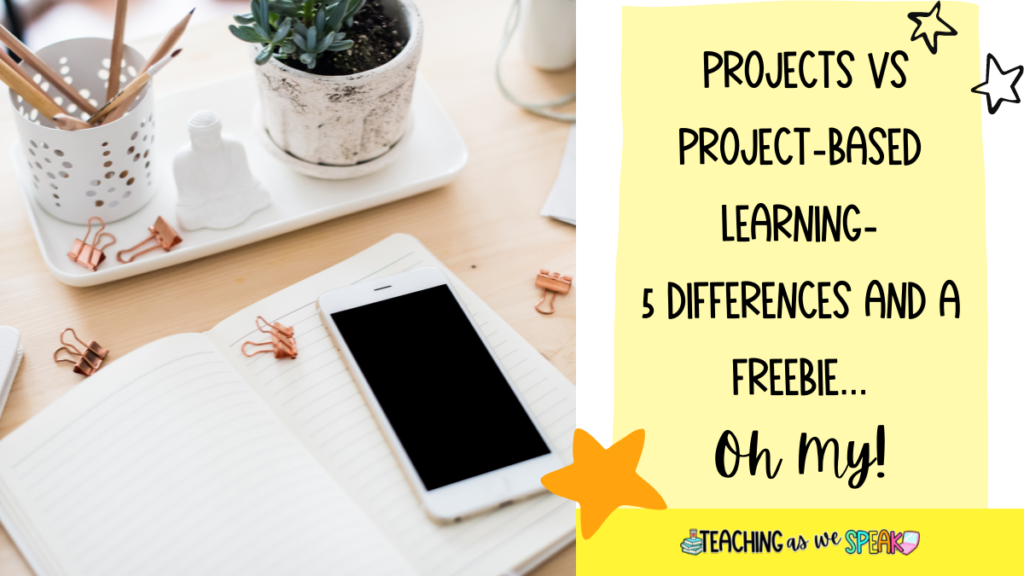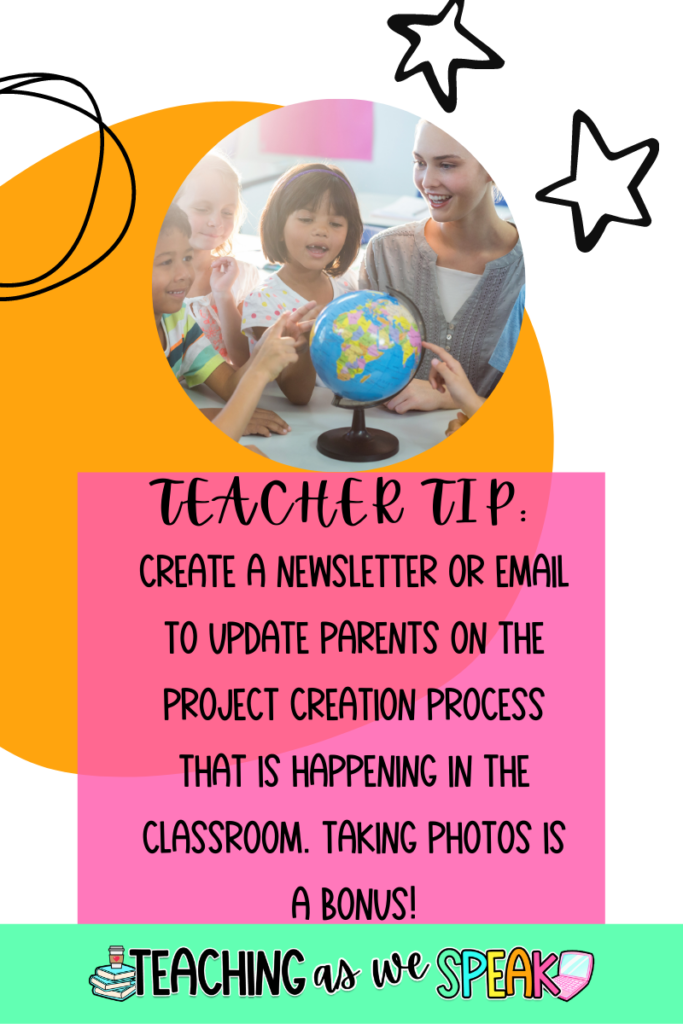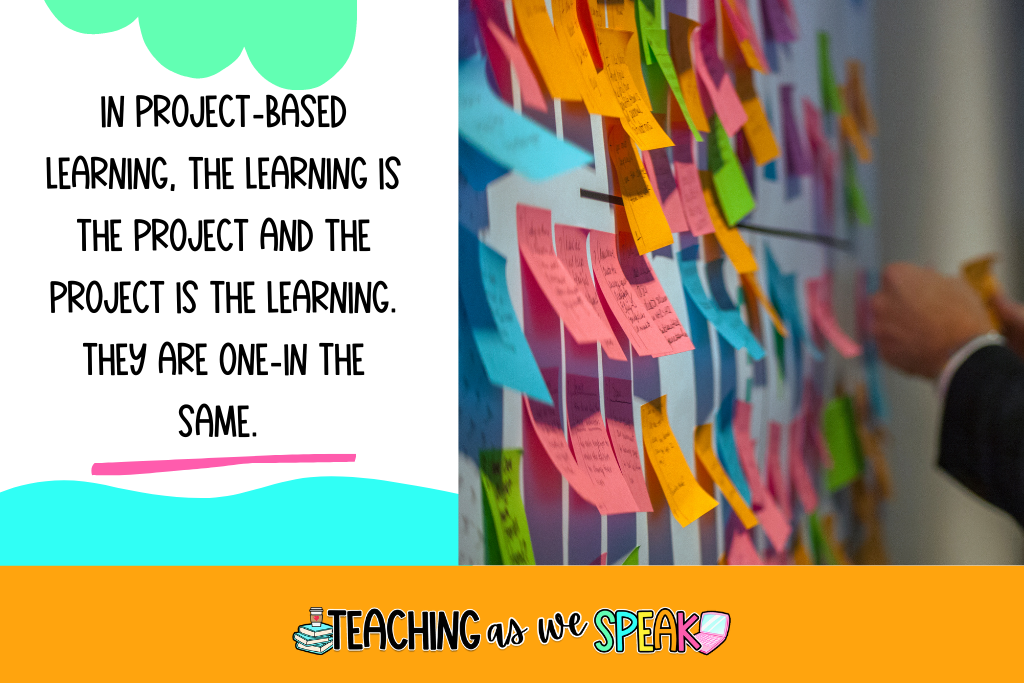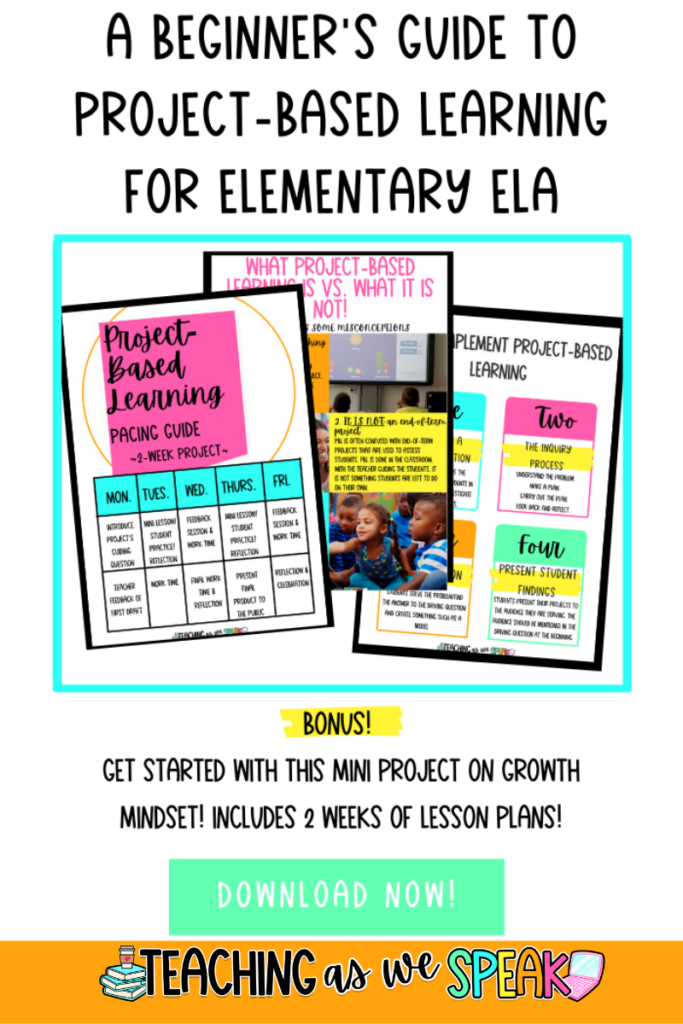In the battle of projects Vs project-based learning, who are you putting your money on? Many teachers think they are implementing project-based learning when really they are just giving their students projects. That can be a tough pill to swallow!
Let’s look at the difference between projects and project-based learning. I’m sharing 5 differences that all teachers should be aware of.
Want a free project that follows the best practices of project-based learning? Download my Beginner’s Guide to Project-Based Learning now! A free two-week project is a click away!

Projects vs Project-Based Learning: A Guiding Question
How many times have you said to your students, “Here’s a project for you to do on _________”?
A stand-alone project is a task, that students are assigned by the teacher. There may be options in terms of what the students create. However, the choices are usually limited and provided by the teacher.
One example would be a good report. Students have either chosen a book to read or were assigned a novel. They are tasked with creating a visual representation of their understanding of the text. They present their project in front of the class. The student is evaluated on their public speaking skills, creativity and understanding of the novel. They are given a rubric that the teacher used to evaluate them.

Using project-based learning, students are not handed a topic. They are presented with resources that have been curated by the teacher and that lead to the students asking a question. This becomes the guiding question which “guides students” to develop a project in search of the answer.
I’ll share an example…
In my resource, “Generation Z Dictionary Project,”, students read a short text that includes a lot of mature words that most students in grades 4-6 would not know, or possibly even heard of. This leads to a class discussion in which students will ask the question, “Could we get a word into the dictionary?, which is the guiding question of the project. I’ve listed which questions you could ask to get students to land on this question below:
- Do you use these words? (no)
- If they aren’t used by a class full of students, why do we have them?(Maybe people used to use them.)
- By if they aren’t used anymore, can’t we just get rid of them? (No, they are a part of the dictionary)
- If old words are in the dictionary, isn’t it time the dictionary gets updated?(yes)
- What words that are used now do you think should be included in the dictionary?List commonly used words
- Could we get any of these words in the dictionary?-GUIDING QUESTION!
Projects vs Project-Based Learning: Classtime
Most projects are usually done at home. As described above, teachers are giving students projects to work on outside of class time that they will then present in front of their peers during class time.

Project-based learning has most, if not all of the learning done during the confines of class time. That is because teachers have the role of the guide using the [project-based learning teaching method.
Let’s say, for example, was giving my students a project on what they learned during the week leading up to Earth Day. Students would go home and create a project that they would bring into class and present.
However if I was using project-based learning to teach my students about Earth Day using a project’s guiding question, “how does the media portray the global warming prevention efforts?”, students would perhaps be answering this question in class in the 2-4 weeks leading up to Earth Day through research, debates and analyzing different media outlets.
Learning and creating vs Creating post-learning
As mentioned above, teachers give projects as a form of assessment. The project is separate from the learning process.
In project-based learning, however, the learning is the project and the project is the learning. They are one-in the same.

PBL Works uses the idea of dessert. In stand-alone projects, the project is the ‘dessert’ to the learning. Whereas, in project-based learning, the project is the main meal. It is happening as the students learn.
Click here to download the free Beginner’s Guide to Project-Based Learning in Elementary ELA.
Projects vs Project-Based Learning: Feedback
Feedback, whether it be from peers or the teacher, is typically given post-projects. It is done after the student has presented their final project at the front of the class. The teacher will ask “Does anyone have any questions or feedback for Jimmy?”. If you’re lucky, maybe one student will speak up and ask about the topic of the presentation or give a simple “I liked the project.”
Project-based learning is different. It’s completely different, actually.
Peers are a part of the creation process. Students meet throughout the project to share their feedback. In a project of 3 weeks, I’ll have students meet at least 3 times to provide feedback.
And that’s only peer feedback. I, as the teacher, would also be meeting with students at least 2 over the span of a 3-week project.
Projects vs Project-Based Learning: Audience
It’s only right that students get an audience to show their projects to after all of that hard work. But what kind of audience?
First, I’m going to paint you a picture.
You have been working hard for two weeks to understand the difference between a growth and a fixed mindset. The guiding question, “how do you know if you have a growth mindset?” has been wracking your brain for days. Finally, you have created a quiz that helps people identify whether or not they have a growth mindset.
Now, tell me which audience to present this quiz to sounds more engaging. Your classmates, who you’ve been presenting in front of since kindergarten, and who have already seen your quiz in the creation process because they’ve been giving feedback to you for days.
Or…
Students and teachers throughout the school, who you already know have a fixed mindset because you have interviewed the teacher and s/he has told you that the school community struggles with having a growth mindset.
I’m just going to go ahead and assume you picked option 2.
Project-based learning involves including real-world audiences as a way to make students feel like they are doing important, meaningful work. Read my blog post on increasing student engagement.
Final Thoughts
I hope this post helped differentiate between stand-alone projects and project-based learning.
Are you using project-based learning in your classroom?
One isn’t better than the other! Projects have an important role in showing what students have learned. However project-based learning is a method of teaching, rather than a method of assessing.
Have a question? Drop it in the comments below!
PS-Don’t forget to grab the Beginner’s Guide to Project-Based Learning before you go! It’s free!





